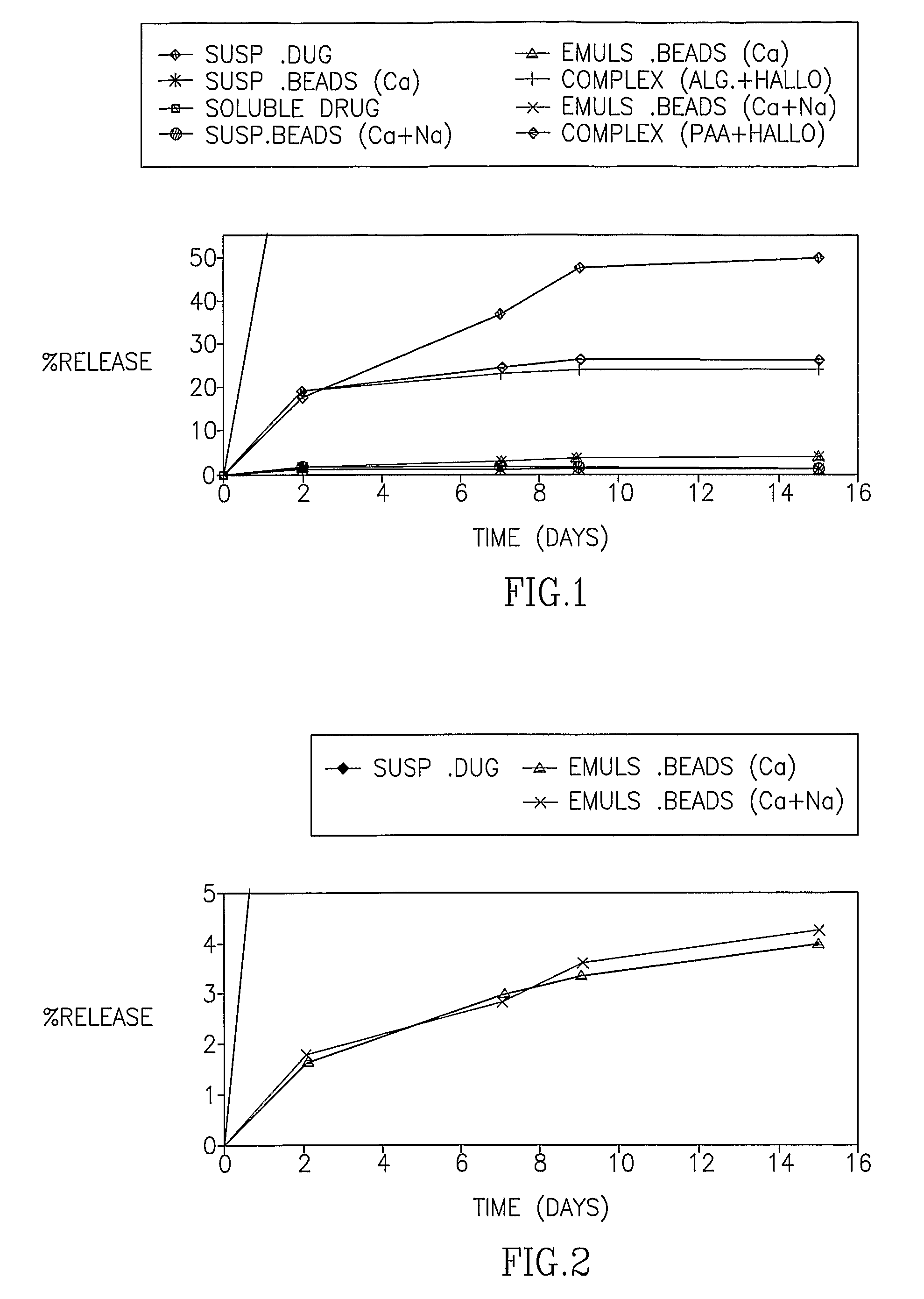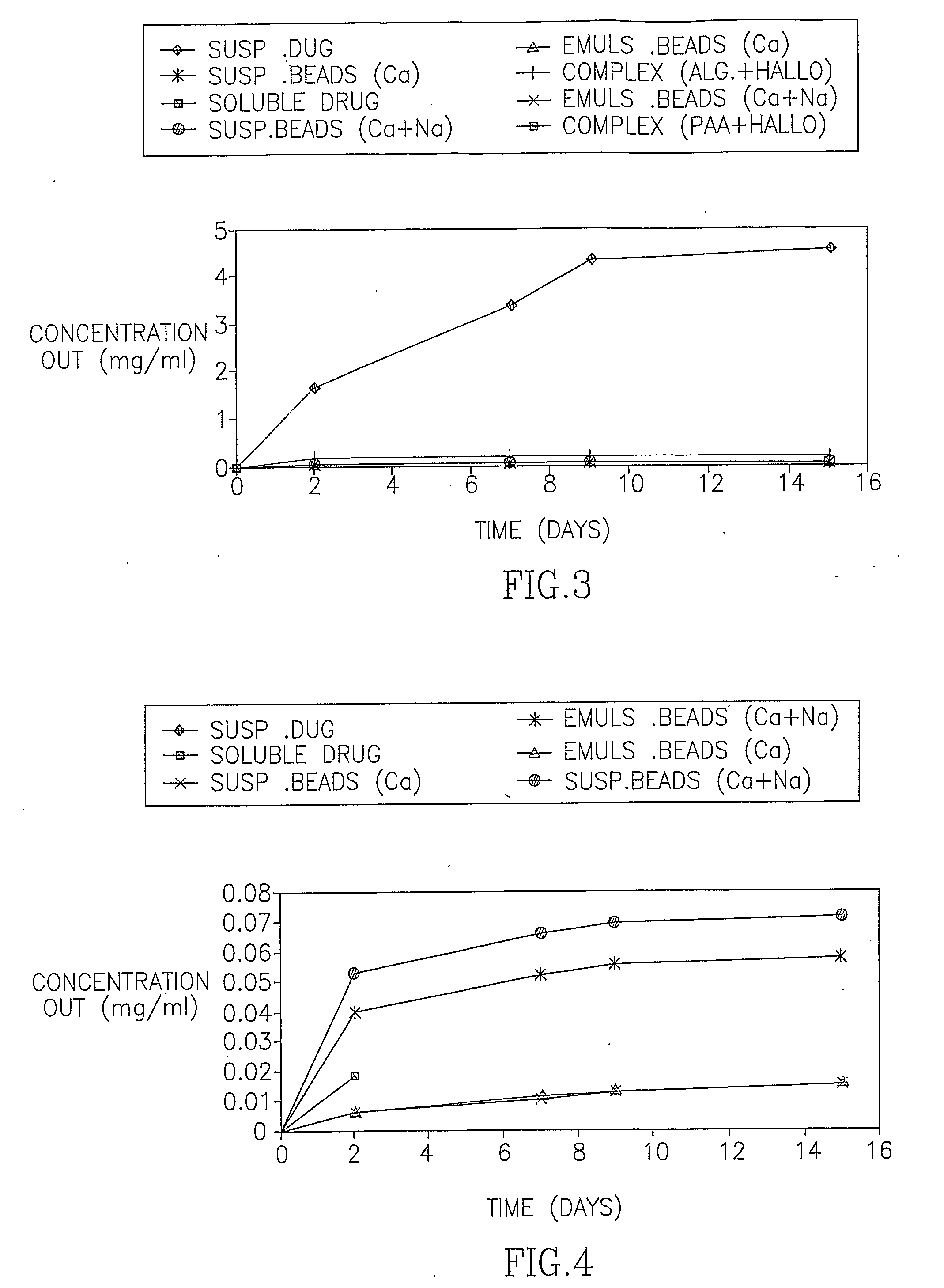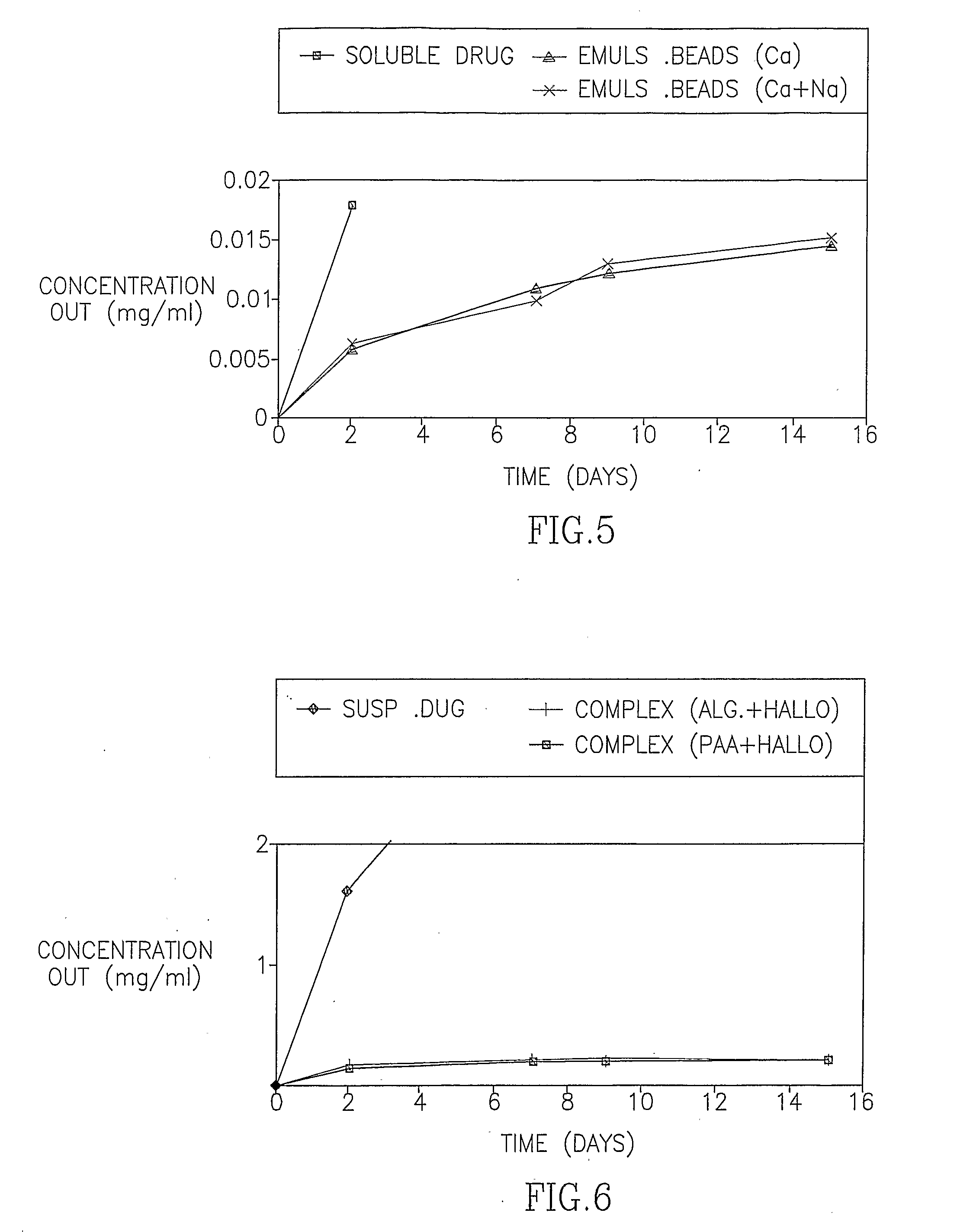Biocompatible polymeric delivery systems for sustained release of quinazolinones
a polymer and quinazolinone technology, applied in the direction of biocide, plant growth regulator, animal husbandry, etc., can solve the problems of lack of sustained release effect, damage to normal tissue structure and function, and unstable dispersed emulsion, so as to prevent tumor growth and prevent the proliferation of smooth muscle cells
- Summary
- Abstract
- Description
- Claims
- Application Information
AI Technical Summary
Benefits of technology
Problems solved by technology
Method used
Image
Examples
example 1
Extended Release of Halofuginone (HF) using Alginate Beads and Halofuginone-polymeric Complexes
[0091] In the first set of experiments, the release of HF from the Emulsion beads, the Suspension beads and the polymeric complexes was examined in 37° C. The release pattern is presented both as the percentage of drug released of the total expected drug release and as the actual measured concentration. FIG. 1 demonstrates the cumulative percentage of HF released over time from alginate beads and polymeric complexes of alginate and poly acrylic acid (PAA). FIG. 2 is an enlargement of FIG. 1 demonstrating the consistent drug release from the Emulsion beads over time. FIGS. 3-6 demonstrate the release of HF from the Emulsion beads, the Suspension beads and the polymeric complexes, expressed as the cumulative concentration of drug (mg / ml) in the external PBS buffer.
[0092] In the second set of experiments, the release of HF from the Emulsion beads, the Suspension beads and the polymeric comp...
example 2
Extended Release of Halofuginone using Halofuginone-polymeric Films
[0094] The following experiments were conducted in order to determine the feasibility of delivering halofuginone in a controlled fashion from biocompatible polymeric films and polymeric-coated articles. The polymers tested were (a) polycaprolactone (PCL) and (b) poly(l)lactic acid (PLA). These two polymers combine enhanced hydrophobicity and high crystallinity and, therefore, their rate of degradation is extremely slow. These polymers have been used extensively in the biomedical field.
[0095] Table 1 below summarizes the mechanical data obtained with the halofuginone-PCL films. FIG. 13 demonstrates the mechanical strength of the halofuginone-PCL polymeric films. It is apparent from both the mechanical data of Table 1 and FIG. 13 that halofuginone microparticles dramatically weakened the film as well as sharply increased its brittleness. However, dissolution of the drug in ethanol:water mixture prior to its incorpora...
example 3
Extended Release of Halofuginone from Metal and Polymeric Carriers Coated with Halofuginone-PCL Films
[0103] Metal and polymeric samples were coated with halofuginone-containing PCL films. Polyethylene terephthlate (PET) is one of the most important biomedical polymers presently used in the cardiovascular area, where they represent the largest family of vascular grafts.
[0104] PET films were coated by dipping the films in a PCL 10% w / w THF solution. After dipping for 2 minutes, the solvent was evaporated and a 50 μm to 100 μm coating layer was formed with a weight increase of approximately 50%. Halofuginone-containing PCL coatings were prepared by dipping PET films into 5 and 10% w / w halofuginone dispersion in THF.
[0105] The release of halofuginone from the PET / PCL bi-layered films into a PBS buffer solution (pH=7.4 0.1M, 37° C.) was studied. The presence of the drug in solution was determined as previously, by UV spectroscopy, focusing on the maximum peak at 242 nm. As apparent fr...
PUM
| Property | Measurement | Unit |
|---|---|---|
| diameters | aaaaa | aaaaa |
| size | aaaaa | aaaaa |
| diameter | aaaaa | aaaaa |
Abstract
Description
Claims
Application Information
 Login to View More
Login to View More - R&D
- Intellectual Property
- Life Sciences
- Materials
- Tech Scout
- Unparalleled Data Quality
- Higher Quality Content
- 60% Fewer Hallucinations
Browse by: Latest US Patents, China's latest patents, Technical Efficacy Thesaurus, Application Domain, Technology Topic, Popular Technical Reports.
© 2025 PatSnap. All rights reserved.Legal|Privacy policy|Modern Slavery Act Transparency Statement|Sitemap|About US| Contact US: help@patsnap.com



